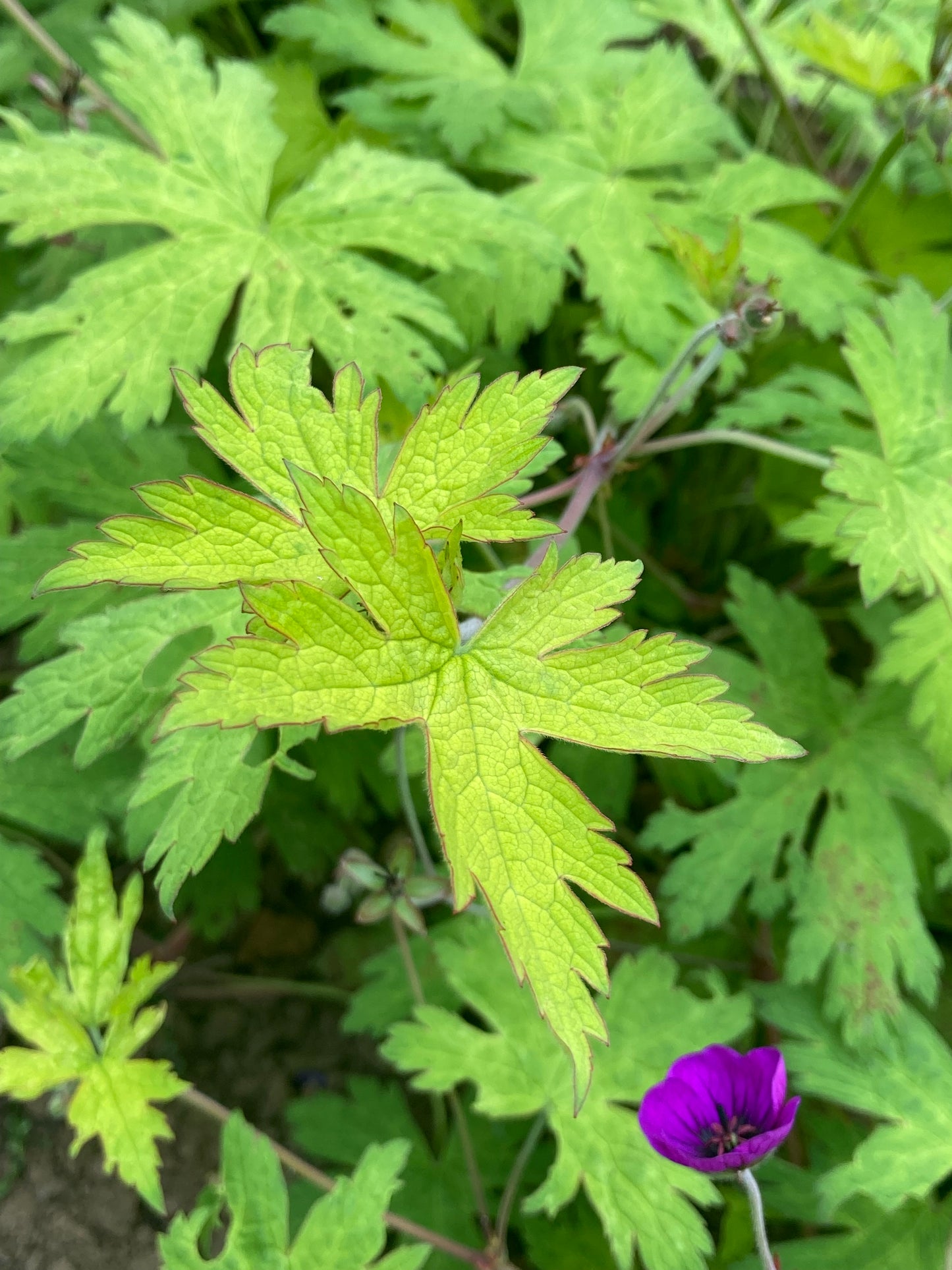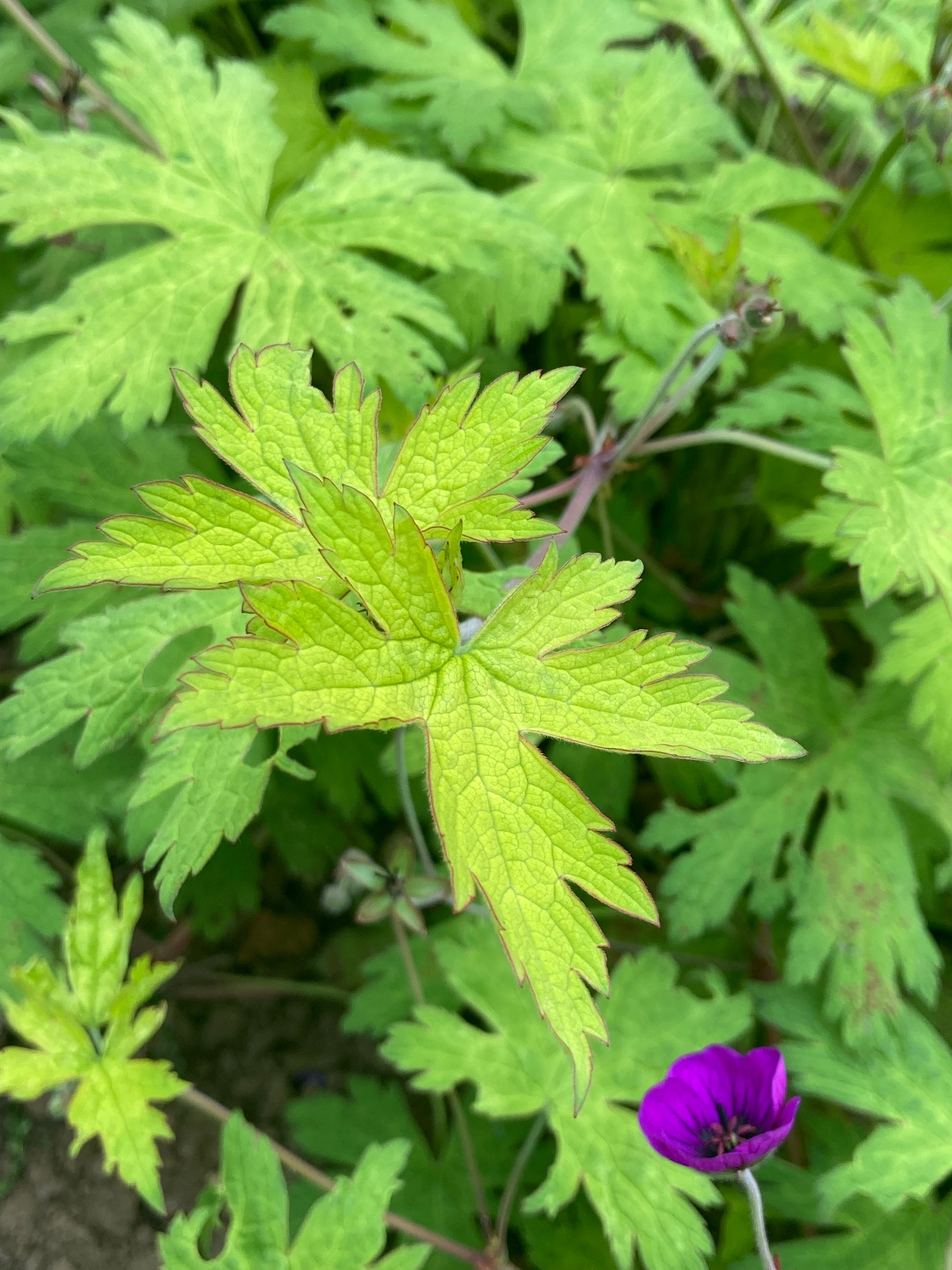1
/
of
7
Champion Plants
Geranium Ann Folkard - AGM
Geranium Ann Folkard - AGM
Regular price
£9.99 GBP
Regular price
Sale price
£9.99 GBP
Unit price
/
per
Tax included.
Couldn't load pickup availability
Geranium
Ann Folkard
(Cranesbill)

A wonderful variety with magenta flowers in spring and summer from large mounds of yellow (the yellow fades through the year to green) foliage, prefect in semi-shade through to full sun.
The yellow foliage in spring creates a striking mound of foliage which creates a nice display, from this mound long flowering stems are produced with wonderful pink flowers with a black center.
Ann Folkard was named by O.G. Folkard in 1974 in Lincolnshire and was a natural hybrid between Geranium psilostemon and Geranium procurens. It has a large habit and forms a spreading mound of golden foliage, unlike other vaieties this plant does not root from the spreading stems and instead creates a tight clump from which it spreads out from then dies back to, this makes it non invasive.
A large growing variety to around 50cm with a spread of 1m
Herbaceous Perennial
Hardy
- Height: Easily maintained to 50cm
- Spread: Easily maintained to 1m, with a sprawling, tumbling habit, non spreading, dies back to tight clump
- Foliage Colour: Bright yellow in spring fading to a paler yellow/green
- Flower Colour: Pink/purple flowers with black centers
-
Soil Type: Moist, well drained, sandy, loam
- Position: Full Sun to partial shade
- Hardiness: Hardy once established in a sheltered spot, H7 (-15 and lower)
- Type: Deciduous, Herbaceous perennial
Grown in a 2 Litre pot
Geranium refers to two types of plants in general gardening, Greenhouse Geraniums (officially Pelargoniums) and hardy perennial Geraniums also known as the Crane's Bill. Here we are dealing with the hardy perennial Geraniums, these plants are generally easy to grow and a great addition to any garden border. The Genus is huge and ranges from small alpines to large perennials. Generally these plants are happy in most conditions apart from very wet and boggy, they will tolerate full sun through to semi-shade and mainly flower from spring to late summer. Their primary growth habit is low making them ideal for ground cover and work really well at the front of the border.
For vigorous varieties trim back after first flowering to encourage regrowth and a second flowering, once they die back in winter a good mulch will give the plant all it needs to shoot away in the spring.
Share














